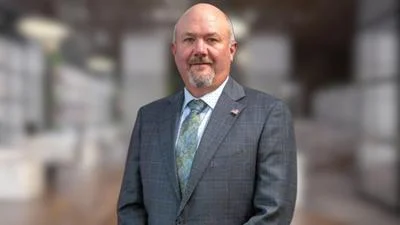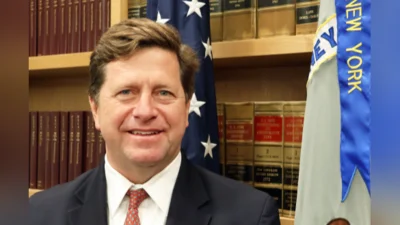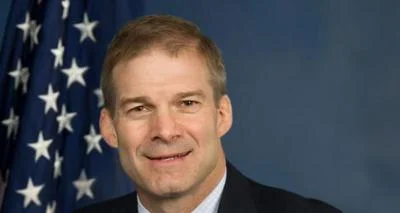The Congressional Record is a unique source of public documentation. It started in 1873, documenting nearly all the major and minor policies being discussed and debated.
“DEAN STONE BRIDGE” mentioning the U.S. Dept. of Transportation was published in the House of Representatives section on pages H1517-H1518 on March 13, 2018.
The Department handles nearly all infrastructure crisscrossing the country. Downsizing the Federal Government, a project aimed at lowering taxes and boosting federal efficiency, said the Department should be privatized to save money, reduce congestion and spur innovation.
The publication is reproduced in full below:
DEAN STONE BRIDGE
Mr. CURTIS. Mr. Speaker, I move to suspend the rules and pass the bill (H.R. 3469) to designate the bridge located in Blount County, Tennessee, on the Foothills Parkway (commonly known as ``Bridge 2'') as the ``Dean Stone Bridge''.
The Clerk read the title of the bill.
The text of the bill is as follows:
H.R. 3469
Be it enacted by the Senate and House of Representatives of the United States of America in Congress assembled,
SECTION 1. DESIGNATION.
The bridge located in Blount County, Tennessee, on the Foothills Parkway (commonly known as ``Bridge 2'') shall be known and designated as the ``Dean Stone Bridge''.
SEC. 2. REFERENCES.
Any reference in a law, map, regulation, document, paper, or other record of the United States to the bridge referred to in section 1 shall be deemed to be a reference to the
``Dean Stone Bridge''.
The SPEAKER pro tempore. Pursuant to the rule, the gentleman from Utah (Mr. Curtis) and the gentleman from California (Mr. Lowenthal) each will control 20 minutes.
The Chair recognizes the gentleman from Utah.
General Leave
Mr. CURTIS. Mr. Speaker, I ask unanimous consent that all Members may have 5 legislative days within which to revise and extend their remarks and include extraneous material on the bill under consideration.
The SPEAKER pro tempore. Is there objection to the request of the gentleman from Utah?
There was no objection.
Mr. CURTIS. Mr. Speaker, I yield 5 minutes to the gentleman from Tennessee (Mr. Duncan).
Mr. DUNCAN of Tennessee. Mr. Speaker, I thank the gentleman from Utah for yielding me this time.
Mr. Speaker, 2 years ago, in February of 2016, I spoke on this floor in tribute to Dean Stone shortly after he retired from his full-time position as editor of The Daily Times newspaper in Maryville, Tennessee.
Dean Stone worked for The Daily Times for an astounding 67 years, serving as sports editor; managing editor; and then starting in 1988, until 2016, as the top editor.
He was always very proud that he gave our great Senator Lamar Alexander one of his first jobs when Senator Alexander was in high school in Maryville.
Dean Stone was the standard of journalistic fairness and integrity in my district and a towering figure in east Tennessee.
Unfortunately, he was unable to enjoy a long retirement, as he passed away several months later at the age of 92.
Mr. Speaker, today I rise in support of a bill that I have introduced to name a very unique 800-foot-long bridge on the Foothills Parkway in his honor.
This bill is a fitting tribute to Dean Stone because his story and that of the Foothills Parkway will be forever linked in history.
First authorized by Congress in 1944, the Foothills Parkway was intended to be the Tennessee companion to the Blue Ridge Parkway, which was built to link the Great Smoky Mountains National Park with the Shenandoah National Park.
Construction on the Foothills Parkway did not begin, however, until 1960; and in the early decades, a few detached sections of the highway were completed.
Despite this progress in the early years, construction of the 16-mile stretch between Walland and Wears Valley, Tennessee, became plagued with problems. A 1.5 mile section in the middle of this segment, which eventually became known as the ``Missing Link,'' featured rugged terrain that was extremely difficult to build upon.
Construction was further complicated by the discovery of minerals in the soil that could cause damage to the environment.
Despite these complications, my staff and I worked hard to keep the project alive. In my early years in Congress, we obtained a $3 million appropriation to resurface and maintain existing sections of this parkway.
{time} 1715
I was pleased that I was able to include $8.6 million in the Federal highway legislation, T-21, which was signed into law in 1998, and then the 2005 highway bill contained another $7.5 billion to continue this project.
In 2016, the Department of Transportation awarded $10 million toward the completion of the parkway, and the State of Tennessee committed to providing an additional $15 million match to fund the final paving of this project. During these years, Dean Stone was a key ally in this process. It was then that the histories of the parkway and Dean Stone became permanently linked.
Dean Stone didn't just write in support of the Foothills Parkway. As chairman of the Great Smoky Mountains Park Commission and as president of the Foothills Parkway Association, Dean worked hard to convince people of the need to complete the missing link. Within the next year, the missing link will be no more, and that section of the parkway will finally be open to the public. Dean Stone was probably the indispensable man in getting this section of the road completed.
The Daily Times has stated that one main task remains. What is still needed, according to The Daily Times, is ``proper acknowledgment of the Blount Countian who persisted over the years in encouraging, insisting, cajoling, and convincing the powers that be the `missing link' could be, should be, and would be connected.''
My bill, H.R. 3469, would name the longest bridge in the missing link section of the Foothills Parkway as the Dean Stone Bridge. This particular bridge is an 800-foot engineering marvel similar to the famous Linn Cove Viaduct on the Blue Ridge Parkway. New technological advances have allowed the construction of a bridge that floats around the edge of the mountain rather than tearing into it.
There is no doubt that the elegant curves of this bridge will be the iconic feature of the Foothills Parkway. Naming it after Dean Stone is a fitting tribute for all that he did for the Great Smoky Mountains National Park and for this region. In fact, it is fair to say that no one individual did more for the Great Smoky Mountains National Park over the years--through many, many years--in promoting the Great Smoky Mountains National Park in many different ways.
I have a beautiful photograph that Dean Stone took of the Cades Cove area of the Smoky Mountains in my office here in Washington even today. My only regret is that Dean Stone did not live long enough to see the completion of the missing link, but I take heart in knowing that soon millions of people will be able to benefit from the fruits of his labors as they drive over the Dean Stone Bridge and see the glories of the Great Smoky Mountains.
Mr. LOWENTHAL. Mr. Speaker, I yield myself the balance of my time.
As we have heard from my colleague, Dean Stone was a fierce champion of the Great Smoky Mountains National Park.
Mr. Stone spent much of his life promoting the long-term preservation of the park and encouraging others to visit this place that he loved so dearly.
Today, the Great Smoky Mountains are one of our Nation's most visited national parks. In fact, the park set a new record of 11.4 million visitors in 2017 and became a destination for tourists from around the world who wanted to witness last summer's total solar eclipse.
I am sure that many of these visitors directly benefited from the decades of work by Dean Stone on behalf of the park and the entire Smoky Mountains region.
Mr. Stone passed away in 2016 at the age of 92. It is a fitting tribute to rename a bridge section of the Foothills Parkway in his honor.
Mr. Speaker, I support this legislation, and I yield back the balance of my time.
Mr. CURTIS. Mr. Speaker, I yield back the balance of my time.
The SPEAKER pro tempore. The question is on the motion offered by the gentleman from Utah (Mr. Curtis) that the House suspend the rules and pass the bill, H.R. 3469.
The question was taken; and (two-thirds being in the affirmative) the rules were suspended and the bill was passed.
A motion to reconsider was laid on the table.
____________________








